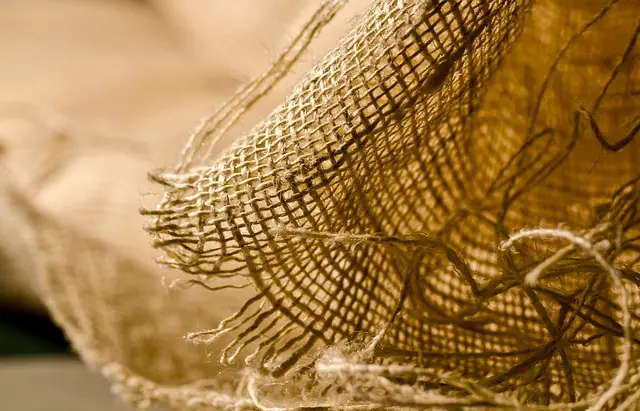Muscle soreness, especially delayed onset muscle soreness (DOMS), is common among athletes, driven by microscopic damage to muscle fibers. While over-the-counter pain relievers are traditional treatments, kratom strains like White Maeng Da and White Bali offer natural analgesic properties for DOMS relief. Kratom, a Southeast Asian herb, contains alkaloids that interact with opioid receptors, providing pain and anxiety relief. White Maeng Da stands out for its potent, rapid effects due to high mitragynine levels, ideal for immediate post-workout soreness. White Bali offers a gentler but sustained soothing effect, appealing for chronic muscle discomfort. Both strains provide an alternative to synthetic medications, with responsible consumption involving dosage awareness and quality sourcing from reputable suppliers.
Muscle soreness after intense workouts or physical activities is a common challenge faced by athletes and fitness enthusiasts. In this comprehensive guide, we explore an intriguing natural solution: kratom. Specifically, we delve into the world of White Maeng Da and White Bali kratom strains, known for their potential muscle-soothing properties. Understanding the causes of muscle soreness and comparing these two kratom varieties, we’ll navigate safe use practices to help you optimize athletic recovery.
- Understanding Muscle Soreness and Its Causes
- Introduction to Kratom: A Natural Solution
- Exploring White Maeng Da Kratom: Properties and Benefits
- Unveiling the Potential of White Bali Kratom
- Comparison: White Maeng Da vs White Bali for Muscle Soreness Relief
- Safe Use and Considerations of Kratom for Athletic Recovery
Understanding Muscle Soreness and Its Causes

Muscle soreness, often described as delayed onset muscle soreness (DOMS), is a common issue experienced by athletes and fitness enthusiasts alike. It typically arises 24-72 hours after intense physical activity or exercise and can cause discomfort, stiffness, and difficulty in moving the affected muscles. Understanding the causes of this condition is key to managing it effectively.
DOMS is primarily triggered by microscopic damage to muscle fibers during strenuous workouts. Intense exercises, such as lifting heavy weights or high-intensity interval training, put significant stress on our muscles, leading to small tears in the muscle tissue and the release of chemicals that cause pain and inflammation. Comparing two popular kratom strains, White Maeng Da and White Bali, both are known for their potential analgesic properties, offering some relief from muscle soreness. While scientific research is still ongoing, these natural compounds have been used traditionally to alleviate discomfort associated with physical exertion, potentially providing an alternative solution for managing DOMS in a more natural way compared to over-the-counter pain relievers.
Introduction to Kratom: A Natural Solution

Kratom, a natural herb native to Southeast Asia, has gained significant attention for its potential therapeutic benefits, particularly in relieving muscle soreness. This plant, scientifically known as Mitragyna speciosa, offers a range of alkaloids that interact with the body’s opioid receptors, providing pain-relieving and relaxing effects. Among the various forms of kratom, white maeng da and white bali stand out for their unique properties.
White maeng da is renowned for its potent analgesic properties, making it a popular choice for those seeking intense muscle soreness relief without the sedative effects often associated with traditional painkillers. On the other hand, white bali kratom is known for its calming and soothing qualities, which can help reduce anxiety and promote relaxation while alleviating muscular discomfort. Both varieties offer natural solutions for managing chronic pain, making them appealing alternatives to synthetic medications.
Exploring White Maeng Da Kratom: Properties and Benefits

White Maeng Da Kratom stands out among other strains for its unique properties and potential benefits, especially in alleviating muscle soreness. Derived from the Mitragyna speciosa plant, this specific variant is known for its potent effects. Its name translates to “white lion,” reflecting both its rare white color and perceived strength. Unlike its sister strain, White Bali, which offers more of a relaxing effect, White Maeng Da is renowned for its energizing and analgesic properties.
The key difference between White Maeng Da vs White Bali lies in their chemical compositions. White Maeng Da contains higher levels of 7-Hydroxymitragynine (7-HM), a potent alkaloid with strong anti-inflammatory and pain-relieving qualities. This makes it particularly effective for individuals seeking relief from chronic muscle aches and post-workout soreness. Its ability to stimulate the release of endorphins, the body’s natural painkillers, contributes to its reputation as an alternative solution for managing physical discomfort.
Unveiling the Potential of White Bali Kratom

In the quest for natural muscle soreness relief, many turn to alternative remedies, and one such option gaining traction is White Bali Kratom. This unique strain, often compared to its popular cousin, White Maeng Da, offers a distinct profile that could be beneficial for those seeking pain management. While White Maeng Da is renowned for its potent analgesic properties, White Bali presents a slightly different approach.
White Bali Kratom is known for its gentle yet effective soothing effects on muscle aches and pains. Its subtle aroma and unique chemical composition make it a popular choice among individuals looking for a more mild but prolonged relief from soreness. Unlike some strains that may induce a sedative effect, White Bali is often described as energizing while still providing comfort, making it an appealing option for those seeking a natural way to manage chronic muscle discomfort without the potential side effects of over-the-counter painkillers.
Comparison: White Maeng Da vs White Bali for Muscle Soreness Relief

When it comes to muscle soreness relief, both White Maeng Da and White Bali kratom strains have gained popularity for their potential therapeutic benefits. However, they offer distinct experiences, making a direct comparison crucial for users looking for the most effective relief. White Maeng Da is renowned for its potent pain-relieving properties, derived from high levels of mitragynine, the primary active alkaloid in kratom. This strain’s fast acting nature and ability to target specific pain points make it a favorite among athletes post-workout or those suffering from chronic muscle aches.
In contrast, White Bali maintains a slightly different profile. While still effective for muscle soreness, its effects are often described as more gentle and long-lasting. The higher content of 7-hydroxy mitragynine in White Bali may contribute to this prolonged relief, offering a soothing experience that can be beneficial for those seeking a more gradual but sustained reduction in muscular discomfort. When considering White Maeng Da vs White Bali, users’ preferences ultimately depend on their desired outcome: rapid, intense relief or a milder, extended sensation.
Safe Use and Considerations of Kratom for Athletic Recovery

Kratom, a natural herb derived from the Mitragyna speciosa plant, has gained popularity among athletes and fitness enthusiasts for its potential muscle soreness relief properties. When used safely and in moderation, kratom can support athletic recovery, making it an attractive alternative to over-the-counter pain medications. The two primary strains of kratom relevant to athletic performance are White Maeng Da and White Bali. White Maeng Da is renowned for its potent analgesic effects, offering significant relief from muscle aches and inflammation. On the other hand, White Bali is appreciated for its milder yet consistent soothing properties, making it a suitable choice for those seeking a gentler approach to recovery without compromising effectiveness.
To ensure safe use, it’s crucial to understand kratom’s mechanism of action. It interacts with opioid receptors in the brain and body, mimicking endorphins’ effects but with distinct variations. This interaction can lead to reduced pain perception and increased relaxation. However, due to its opioid-like properties, responsible consumption is essential. Users should adhere to recommended dosages, avoid prolonged use, and consider consulting healthcare professionals, especially if they have pre-existing medical conditions or are taking other medications. Additionally, choosing reputable sources for kratom products is vital to guarantee purity and quality, ensuring a safer recovery experience.
Kratom, particularly its varieties like White Maeng Da and White Bali, offers a promising natural alternative for managing muscle soreness. This article has explored their unique properties and benefits, highlighting the potential advantages of each for athletic recovery. While both strains show promise in relief from post-exercise discomfort, individual preferences and specific needs may dictate the better choice—White Maeng Da for its potent pain-relieving effects or White Bali for its calming, anti-inflammatory properties. Always use kratom responsibly and consult a healthcare professional before integrating it into your recovery routine.






